Themed collection NeuroMedChem

An overview on the synthesis of carbohydrate-based molecules with biological activity related to neurodegenerative diseases
Herein, we discuss the synthesis of carbohydrate derivatives exhibiting high inhibitory activity against cholinesterase enzyme and their potential therapeutic use for the treatment of Alzheimer's disease.

RSC Med. Chem., 2021,12, 2001-2015
https://doi.org/10.1039/D1MD00217A
Progress in mechanistically novel treatments for schizophrenia
Recent efforts to identify small molecules for schizophrenia with non-D2 mechanisms will be highlighted. The potential for disease modifying treatments for schizophrenia will also be discussed.

RSC Med. Chem., 2021,12, 1459-1475
https://doi.org/10.1039/D1MD00096A
The medicinal chemistry of mitochondrial dysfunction: a critical overview of efforts to modulate mitochondrial health
This manuscript reviews the compounds historically used to modulate mitochondria, and offers a perspective on which targets have been convincingly (in)validated with high quality chemical matter and those which remain untested.
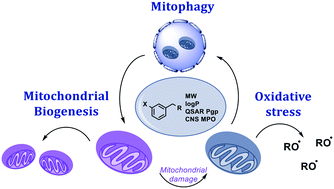
RSC Med. Chem., 2021,12, 1281-1311
https://doi.org/10.1039/D1MD00113B
Small molecule therapeutics for neuroinflammation-mediated neurodegenerative disorders
Recent progress on key microglia targets and discovery of small molecule compounds advancing in clinical trials to minimize neuroinflammation.

RSC Med. Chem., 2021,12, 871-886
https://doi.org/10.1039/D1MD00036E
Novel benzimidazole-based pseudo-irreversible butyrylcholinesterase inhibitors with neuroprotective activity in an Alzheimer's disease mouse model
Benzimidazole-based inhibitors of butyrylcholinesterase were designed and tested for their activity and selectivity in vitro, leading to compound (11d) that attenuated Aβ25-35-induced learning impairments in an Alzheimer's disease mouse model.
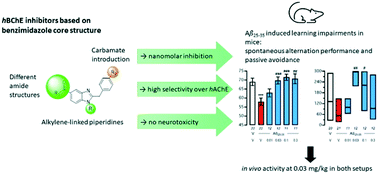
RSC Med. Chem., 2022,13, 944-954
https://doi.org/10.1039/D2MD00087C
Design, synthesis, and biological evaluation of new thalidomide–donepezil hybrids as neuroprotective agents targeting cholinesterases and neuroinflammation
A new series of eight multifunctional thalidomide–donepezil hybrids were synthesized based on the multi-target-directed ligand strategy and evaluated as potential neuroprotective, cholinesterase inhibitors and anti-neuroinflammatory agents against neurodegenerative diseases.
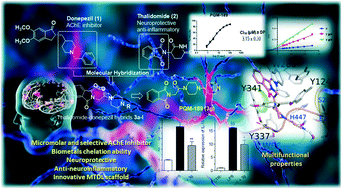
RSC Med. Chem., 2022,13, 568-584
https://doi.org/10.1039/D1MD00374G
Anti-amyloidogenic indolizino[3,2-c]quinolines as imaging probes differentiating dense-core, diffuse, and coronal plaques of amyloid-β
Indolizino[3,2-c]quinoline derivatives are potential imaging agents targeting various forms of amyloid-β plaques.
![Graphical abstract: Anti-amyloidogenic indolizino[3,2-c]quinolines as imaging probes differentiating dense-core, diffuse, and coronal plaques of amyloid-β](/en/Image/Get?imageInfo.ImageType=GA&imageInfo.ImageIdentifier.ManuscriptID=D1MD00030F&imageInfo.ImageIdentifier.Year=2021)
RSC Med. Chem., 2021,12, 1926-1934
https://doi.org/10.1039/D1MD00030F
Synthesis and antitumour evaluation of indole-2-carboxamides against paediatric brain cancer cells
Indole-2-carboxamides: antitumour potential and selectivity against paediatric glioma.
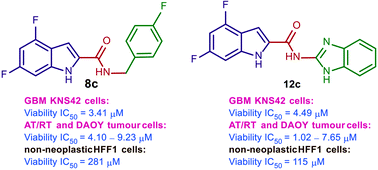
RSC Med. Chem., 2021,12, 1910-1925
https://doi.org/10.1039/D1MD00065A
Boron-based hybrids as novel scaffolds for the development of drugs with neuroprotective properties
Boron-based hybrids, containing a lipoyl group as an antioxidant moiety, as multi-target ligands against oxidative stress and Aβ-neurotoxicity, and for inhibition of acetylcholinesterase in an experimental in vitro model of Alzheimer's disease.
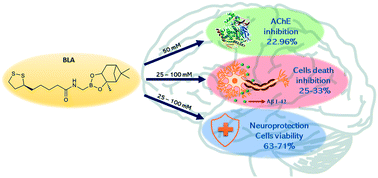
RSC Med. Chem., 2021,12, 1944-1949
https://doi.org/10.1039/D1MD00177A
Synthesis and structure–activity relationships of 3,4,5-trisubstituted-1,2,4-triazoles: high affinity and selective somatostatin receptor-4 agonists for Alzheimer's disease treatment
3,4,5-Trisubstituted-1,2,4-triazole somatostatin receptor-4 agonist SAR.
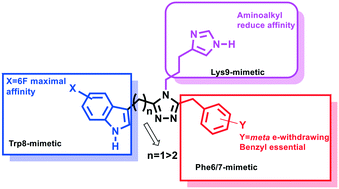
RSC Med. Chem., 2021,12, 1352-1365
https://doi.org/10.1039/D1MD00044F
Illuminating the norepinephrine transporter: fluorescent probes based on nisoxetine and talopram
A nisoxetine-based fluorescent probe, 6, has been synthesized that can be used to visualize the norepinephrine transporter (NET) in NET-expressing HEK293 cells at low nanomolar concentrations.
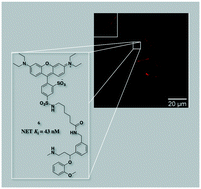
RSC Med. Chem., 2021,12, 1174-1186
https://doi.org/10.1039/D1MD00072A
Optimization of brain-penetrant picolinamide derived leucine-rich repeat kinase 2 (LRRK2) inhibitors
The evolution of picolinamide derived LRRK2 inhibitors with improved kinase off target selectivity and de-risked for AMES mutagenicity.
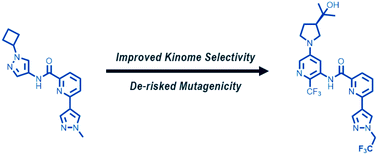
RSC Med. Chem., 2021,12, 1164-1173
https://doi.org/10.1039/D1MD00097G
Discovery of sustainable drugs for Alzheimer's disease: cardanol-derived cholinesterase inhibitors with antioxidant and anti-amyloid properties
A series of cardanol derivatives has been developed from an inexpensive food waste material (i.e., cashew nut shell liquid, CNSL) to generate cholinesterase inhibitors with concomitant anti-amyloid and anti-oxidative activities and no cytotoxicity.
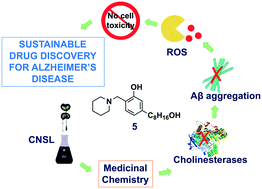
RSC Med. Chem., 2021,12, 1154-1163
https://doi.org/10.1039/D1MD00046B
Phenyl bioisosteres in medicinal chemistry: discovery of novel γ-secretase modulators as a potential treatment for Alzheimer's disease
We propose the use of a bridged piperidine moiety as a phenyl bioisostere, leading to strongly improved drug like properties. This concept was applied to the discovery of γ-secretase modulators for the potential treatment of Alzheimer's disease.
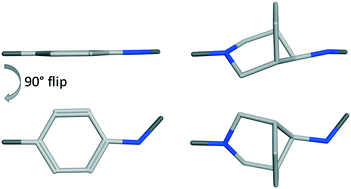
RSC Med. Chem., 2021,12, 758-766
https://doi.org/10.1039/D1MD00043H
About this collection
Guest edited by Dr Antonia Stepan (Roche), Dr Amy Ripka (Lucy Therapeutics) and Professor Michael Kassiou (University of Sydney), this collection aims to highlight medicinal chemistry advances in targeting neurological disorders. The collection will cover a range of neurological diseases including, but not limited to, Parkinson’s Disease, Alzheimer’s disease and amyotrophic lateral sclerosis.
New articles will be added to the collection upon publication. Please return to this page frequently to see the collection grow